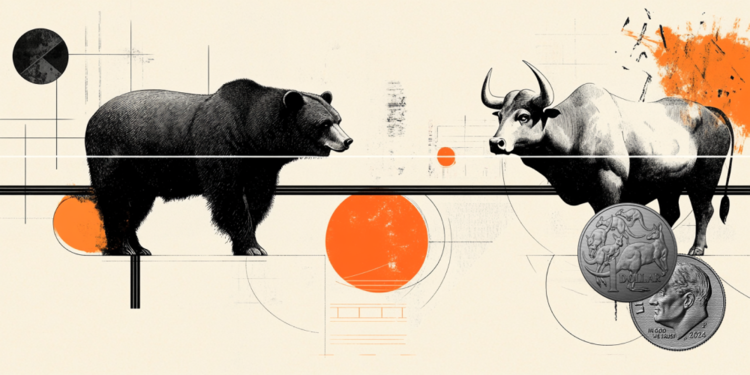USD/CAD slips below 1.4000 due to Fed rate cut bets
USD/CAD depreciates after two days of little gains, trading around 1.3980 during the Asian hours on Monday. The pair loses ground as the US Dollar (USD) faces challenges following the release of softer US inflation data on Friday, which helps keep the likelihood of the Federal Reserve (Fed) rate cuts higher. The CME FedWatch Tool indicates that markets are now pricing in nearly a 97% chance of a Fed rate cut in October and a 96% possibility of another reduction in December.
The US Bureau of Labor Statistics (BLS) reported on Friday that the US Consumer Price Index (CPI) rose 3.0% year-over-year (YoY) in September, following a 2.9% the prior month. This reading came in below the market expectation of 3.1%. Meanwhile, the monthly CPI increased 0.3%, against the 0.4% rise seen in August. The core CPI increased 0.2% month-over-month, compared to the market consensus of 0.3%, while the yearly core CPI was up 3.0% in September.
However, the downside of the USD/CAD pair could be restrained as the US Dollar may receive support amid easing United States (US)-China trade tensions. The top negotiators US and China reached a consensus on major disputes and paved the way for Presidents Donald Trump and Xi Jinping to meet on Thursday to finalize a trade deal aimed at easing tensions.
Additionally, US Treasury Secretary Scott Bessent said that President Trump’s threat to impose 100% tariffs on Chinese goods “is effectively off the table,” while adding that China will purchase soybeans and postpone rare-earth export controls.
President Trump announced on Saturday that he was raising tariffs on Canada by an additional 10% “above what they’re paying now.” The move came in response to an ad from Canada’s Ontario province that aired during the World Series broadcast. Trump had already halted trade talks with Ottawa on Thursday, calling the tariff-related ad misleading.
Canadian Dollar FAQs
The key factors driving the Canadian Dollar (CAD) are the level of interest rates set by the Bank of Canada (BoC), the price of Oil, Canada’s largest export, the health of its economy, inflation and the Trade Balance, which is the difference between the value of Canada’s exports versus its imports. Other factors include market sentiment – whether investors are taking on more risky assets (risk-on) or seeking safe-havens (risk-off) – with risk-on being CAD-positive. As its largest trading partner, the health of the US economy is also a key factor influencing the Canadian Dollar.
The Bank of Canada (BoC) has a significant influence on the Canadian Dollar by setting the level of interest rates that banks can lend to one another. This influences the level of interest rates for everyone. The main goal of the BoC is to maintain inflation at 1-3% by adjusting interest rates up or down. Relatively higher interest rates tend to be positive for the CAD. The Bank of Canada can also use quantitative easing and tightening to influence credit conditions, with the former CAD-negative and the latter CAD-positive.
The price of Oil is a key factor impacting the value of the Canadian Dollar. Petroleum is Canada’s biggest export, so Oil price tends to have an immediate impact on the CAD value. Generally, if Oil price rises CAD also goes up, as aggregate demand for the currency increases. The opposite is the case if the price of Oil falls. Higher Oil prices also tend to result in a greater likelihood of a positive Trade Balance, which is also supportive of the CAD.
While inflation had always traditionally been thought of as a negative factor for a currency since it lowers the value of money, the opposite has actually been the case in modern times with the relaxation of cross-border capital controls. Higher inflation tends to lead central banks to put up interest rates which attracts more capital inflows from global investors seeking a lucrative place to keep their money. This increases demand for the local currency, which in Canada’s case is the Canadian Dollar.
Macroeconomic data releases gauge the health of the economy and can have an impact on the Canadian Dollar. Indicators such as GDP, Manufacturing and Services PMIs, employment, and consumer sentiment surveys can all influence the direction of the CAD. A strong economy is good for the Canadian Dollar. Not only does it attract more foreign investment but it may encourage the Bank of Canada to put up interest rates, leading to a stronger currency. If economic data is weak, however, the CAD is likely to fall.





